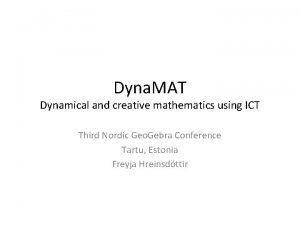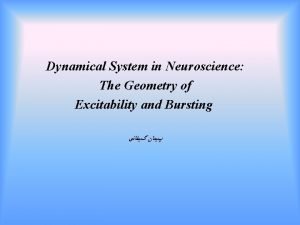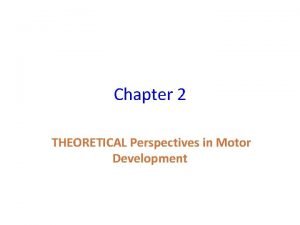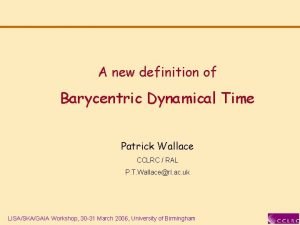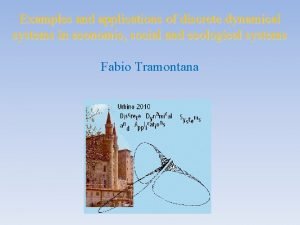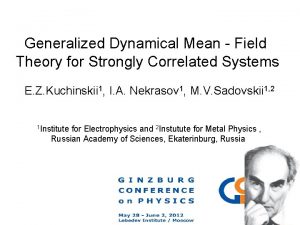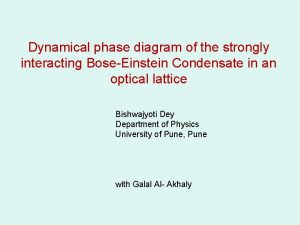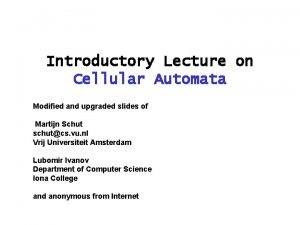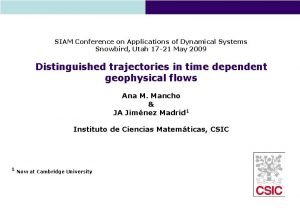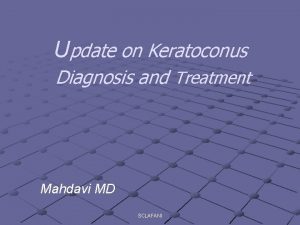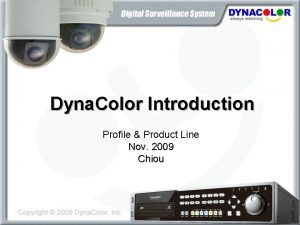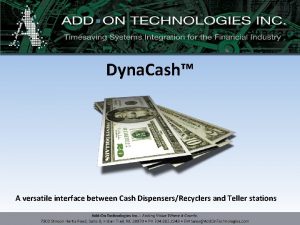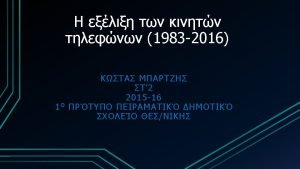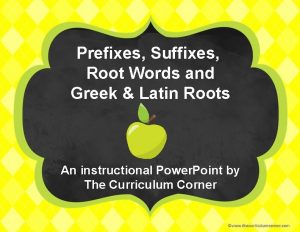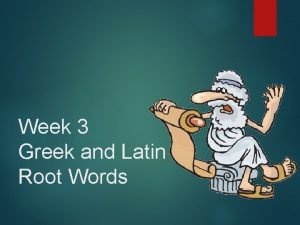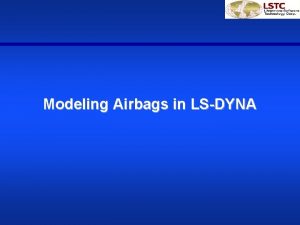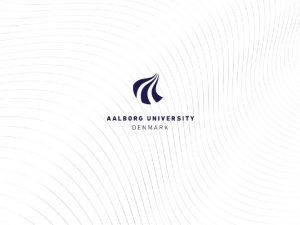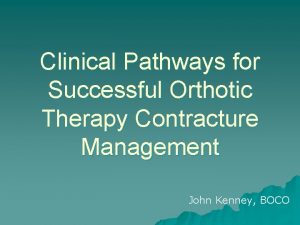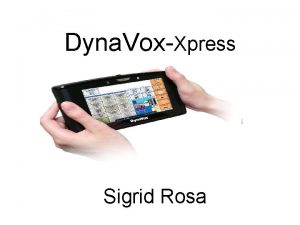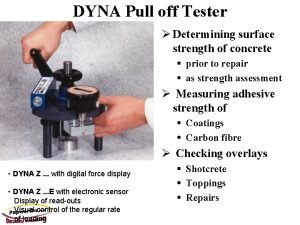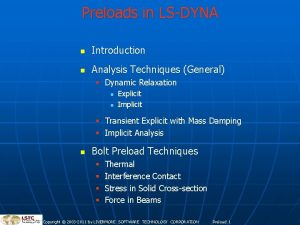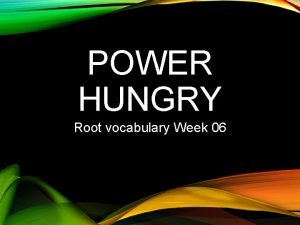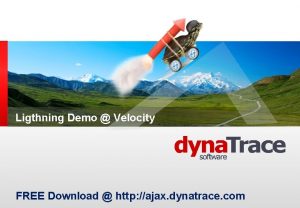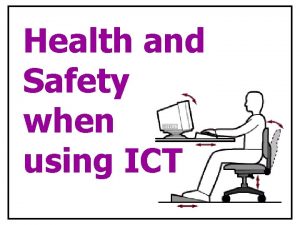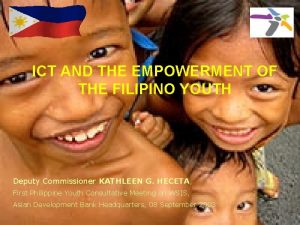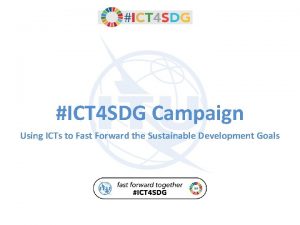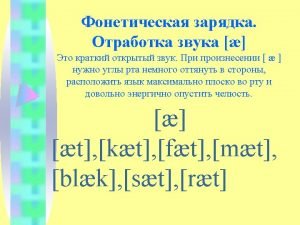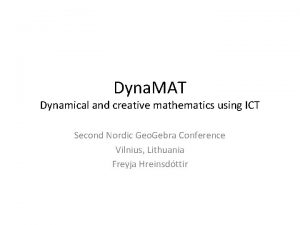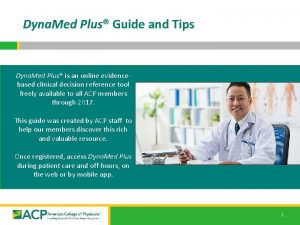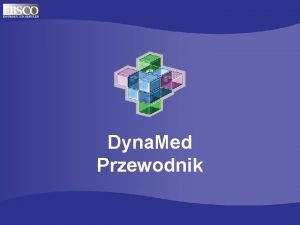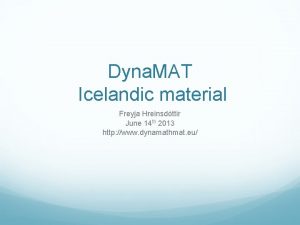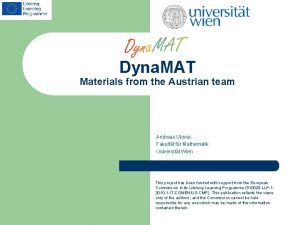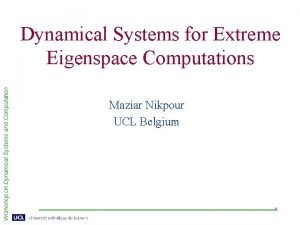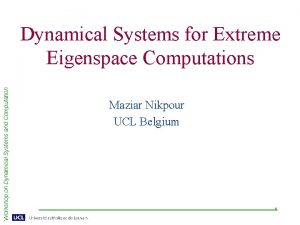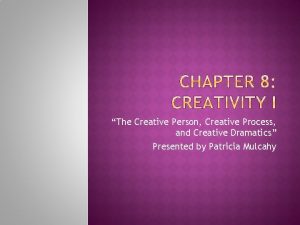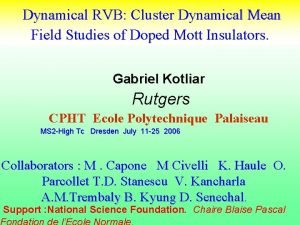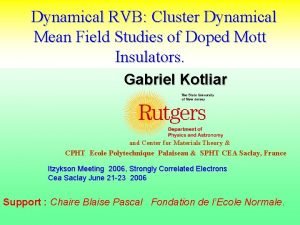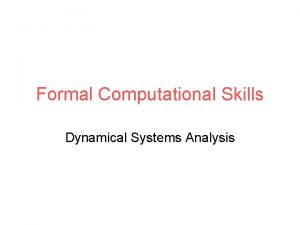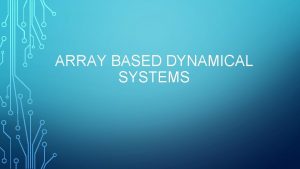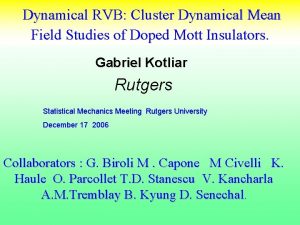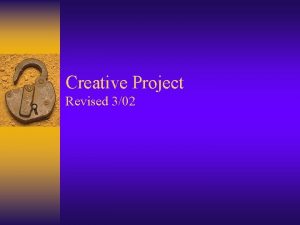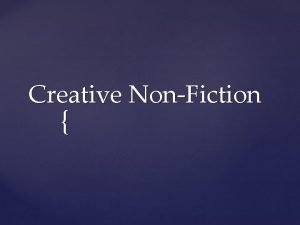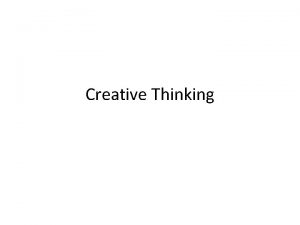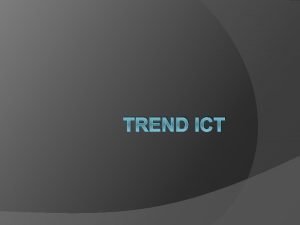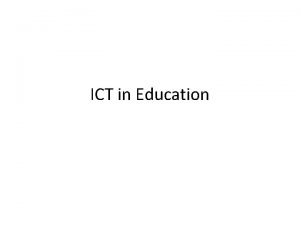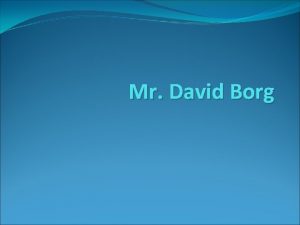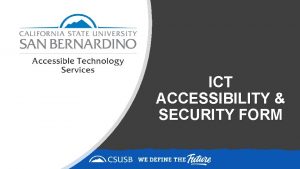Dyna MAT Dynamical and creative mathematics using ICT





























- Slides: 29

Dyna. MAT Dynamical and creative mathematics using ICT Third Nordic Geo. Gebra Conference Tartu, Estonia Freyja Hreinsdóttir

Dyna. Mat • • Comenius project – Lifelong Learning Program http: //eacea. ec. europa. eu/llp/index_en. php 3 years Dec. 2010 – Nov. 2013 Project of 6 partners: – Pisa, Italy – Vladimir Georgiev – Sofia, Bulgaria – Oleg Mushkarov + team – Nitra, Slovakia – Sona Ceretkova + team – Vienna, Austria – Andreas Ulovec – Århus, Denmark – John Andersen – Reykjavík, Iceland – Freyja Hreinsdóttir

Goal and planned results of the project • The goal is to produce didactic material for the use of ICT in mathematics • 1. E-Book with materials (translated to our languages) • 2. Preliminary Course, e-learning course and workshop for pre- and in-service-teachers • 3. Web-page containing e-book, materials for courses and a platform for e-learning course. • 4. Final conference in 2013 in Slovakia to present materials to teacher educators, teachers and teacher students, with workshops to actively work with and develop further materials.

Website • Our website is maintained in Slovakia at • http: //www. dynamathmat. eu/

How we work • Each partner wrote/collected at least 5 chapters, 10 page each • During meetings this was reviewed and discussed • External reviewer also gave feedback • We try out material in different countries and collect feedback from teachers • At least one chapter from each country is translated into other languages


The material My material: Euclidean eggs Functions and sliders 2 by 2 matrices – two chapters on how to use the two graphic views in Geo. Gebra to investigate maps from the plane to the plane • Piecewise defined functions • •

Two graphic views • In Geo. Gebra 4. 0 the option of having two graphic views open at the same time makes it possible to study maps from the plane to plane • Linear maps are particularly easy to study • There are two ways to do this: – defining a 2 x 2 matrix – defining the action on one point and using the trace option

A transformation

2 x 2 matrices • A 2 x 2 matrix can be defined as a list of lists in the input field. Also possible to do this in the spreadsheet • If we define sliders a, b, c, d and then the matrix then we can easily change the matrix and study the effects of that. • The command Apply. Matrix[matrix, object] is very useful in this context

Demonstrate additivity and homogeneity of linear maps Also very easy to demonstrate that a linear transformation maps lines to lines

Image of the unit square

The area of the image of the unit square - determinants


The inverse of a matrix

Another way to sudy the effects of matrices • Given a point (x, y) in Graphics view 1 we can define a new point in Graphics view 2 by applying a linear map to the point. • We can then put the trace on the point in Graphics view 2 and move (x, y) around in Grephics view 1 • This is particularly interesting to see when we define the first point as a point on an object e. g. a line or a circle.

Nonlinear map The method above can be used for any transformation, even non-linear ones. Say we want to study the map We define a point E on a line and then the point G = in Graphic view 2. We then put the trace on G and move the point E along the line and watch the image trace out a curve in Graphics 2.

Maps from the complex numbers to the complex numbers • We can use a similar method to study maps from C to C, e. g. Image of a line, circle and the boundary of a square

Eggs Moss egg Four-point egg Five-point egg Source for Euclidean Eggs: Dixon, R. Mathographics. Basic Blackwell Limited, Oxford, England, 1987

Euclidean eggs • Exercise with arcs and circles • When is the meeting of the arc smooth?

Moss egg – Geo. Gebra file

Four-point egg

Four-point egg

Other partners • GPS – work from Austria, Denmark and Slovakia • Art – work from Bulgaria • Playground mathematics – from Slovakia • Mathematical work from Italy

Napoleons problem (Italy) Geo. Gebra is used to play with generalisations of theorem

Example from Vienna Aviation • Flight from Copenhagen to Vienna – GPS on • Data into Excel •

Example from Denmark Geometry in the field - GPS • The result looks like a triangle but certainly not an equilateral one. Zooming do not make you happier • Fig. 8 Zooming in on "equilateral" triangle

Dyna-Art (Bulgaria)

Website Please check out the material on • http: //www. dynamathmat. eu/ Thank you!
 Moss egg
Moss egg Dynamical systems neuroscience
Dynamical systems neuroscience Motor development theories
Motor development theories Barycentric dynamical time
Barycentric dynamical time Discrete dynamical systems examples
Discrete dynamical systems examples Dynamical mean-field theory
Dynamical mean-field theory Dynamical
Dynamical Dynamical systems examples
Dynamical systems examples Siam conference on applications of dynamical systems
Siam conference on applications of dynamical systems Dyna intralimbal
Dyna intralimbal Dyna color
Dyna color Dyna cash
Dyna cash 1983
1983 Fort latin root
Fort latin root Words with the greek root cycl
Words with the greek root cycl Ls dyna airbag
Ls dyna airbag Ls dyna student
Ls dyna student Dyna orthotics
Dyna orthotics Dyna mayer
Dyna mayer Dyna pull off tester
Dyna pull off tester Dynamic relaxation ls dyna
Dynamic relaxation ls dyna Dyna greek
Dyna greek Dynatrace ajax
Dynatrace ajax Using mathematics and computational thinking
Using mathematics and computational thinking Health and safety precautions when using ict
Health and safety precautions when using ict Empowerment through ict
Empowerment through ict Campaign plan using ict
Campaign plan using ict Using system using system.collections.generic
Using system using system.collections.generic Dtfd switch
Dtfd switch Black cat sat
Black cat sat
